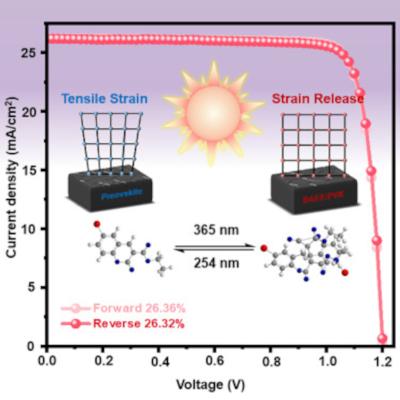Researchers from the Chinese Academy of Sciences, Beijing Institute of Technology and Shanghai Lettee Perovskite Optoelectronic Technology have addressed the issue of residual tensile strain - which impedes the improvement of efficiency and intrinsic stability of perovskite solar cells (PSCs) (resulting from the perovskite lattice distortion and different thermal expansion coefficients). To this end, they proposed a molecule-triggered strain regulation and interfacial passivation strategy to enhance the efficiency and stability (especially photostability) of PSCs.
Their strategy utilizes the [2 + 2] cycloaddition reaction of 6-bromocoumarin-3-carboxylic acid ethyl ester (BAEE), consuming the incident UV light to suppress the tensile strain evolution.
Meanwhile, the BAEE can form a strong bond with NiOx, assisting the perovskite growth and the interface defect passivation.
The team obtained an efficiency of 26.32% (certified 26.08%), open-circuit voltage (Voc) of up to 1.201 V with low Voc loss (0.342 V), as well as long-term stability (continuous 365 nm UV illumination: T90 > 110 h in N2, T90 > 6 h in ambient air, and continuous LED white light irradiation at 100 mWcm−2: T90 > 1,000 h).
This recent work presents an avenue for highly efficient and stable perovskite photovoltaic production.


